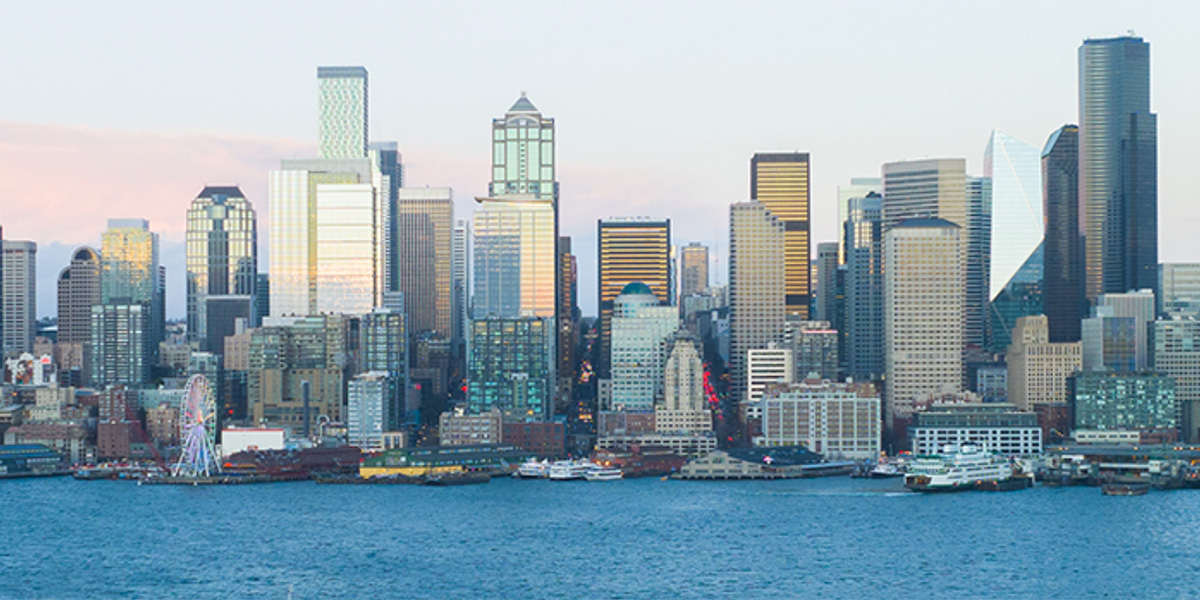Downtown plans can be strategic or physical, but they all build up to answering the same question: how do we have welcoming and inclusive downtown spaces?
“Weaving Indigenous Culture into Our Downtown Evolution” breakout session at the 70th annual International Downtown Association Conference in Seattle offered advice from organizations that have successfully integrated Indigenous values, traditions and languages in public spaces to honor the past, heal the present and celebrate the future.
MIG Project Manager/Planner Southison (Sou) Garner moderated the session, which included MIG Principal/Native Nation Building Studio Director José de Jeús Leal; Donny Stevenson, Muckleshoot Tribal Councilmember; and Jordan Remington, Programs Manager/Curator of Indigenous Programs at Friends of Waterfront Seattle.
Acknowledging the Past to Plan for a Future
Truly welcoming downtown spaces include Indigenous history and life, and celebrate the strengths of Indigenous people and their many contributions. It’s a concept that is easy enough to plan for but can be nuanced when putting it into practice.
Often when people view Indigenous culture, they focus on the past, boiling it down to an event that happened a long time ago, without really acknowledging the harm that may have occurred over many years. And without creating a purposeful way to make it better.
To have any kind of meaningful involvement from Native Nations in downtown planning, planners must also celebrate the living cultures that are still here, allowing them to influence and be part of our spaces now.
Rebuilding Relationships
A lot of the historic downtowns were established at the intersection of trade and culture. But also at the intersection of the area’s tribes. Seattle’s downtown is a great example of what happens when land and community are stolen—and the amount of time it takes to rebuild a relationship. The City is now actively cultivating a relationship with the area’s Native Nations.
One example of Seattle’s commitment is the Indigenous Advisory Council (IAC), a government body composed of nine members representing Indigenous communities on issues and recommendations affecting American Indian, Alaska Native and Native Hawaiian people. Another is the routine storytelling sessions conducted by the Friends of Waterfront Park where Native elders share their Nation’s stories and community members are invited to listen and learn. Events and inclusion efforts such has this is where we start to see this celebration of art and life infused into our public spaces.
It’s that visibility that is important. Often, Native Nations will be brought in to facilitate discussions, but there still needs to be visibility attached to physical spaces, and not just on the programmatic side.
Inviting Native Nations into the Conversation
For the IDA session, Garner brought together the three speakers, who provided insights into how to be inclusive partners with Native Nations. Working with Native Nations is different than working with government agencies. It requires a different, flexible mind set. The process might not be linear. And you might not get immediate buy-in.
“Find a way to tie your project in to how we can be better stewards of this land,” Stevenson said. “It’s going to be slow—but don’t get discouraged if you hear ‘no’ a few times. ”
“It’s also important to do your research and know who you’re talking to,” said Leal. “Each Indigenous community is different—it’s not a one-size-fits-all kind of process. So be sure you understand the history and culture of the specific community you’re working with.”
When planning out most projects, the end result is the primary focus and timelines rule the work. There isn’t as much emphasis put on the front-end work of relationship building and creating a partnership, which is a key part of working with Native Nations. “We are the ones coming into their spaces,” Remington said. “We would be remiss to think that our way is the only way to manage a project. Take the lead from them and maybe throw out the timeline and schedule and instead prioritize cultivating a relationship.”
Because your project is not just a project. Everything from the people to the land is interconnected. Nothing is singular, and that requires intention, and that can take time. Often, how you get to a resolution—the journey—is just as important as the deliverable.

